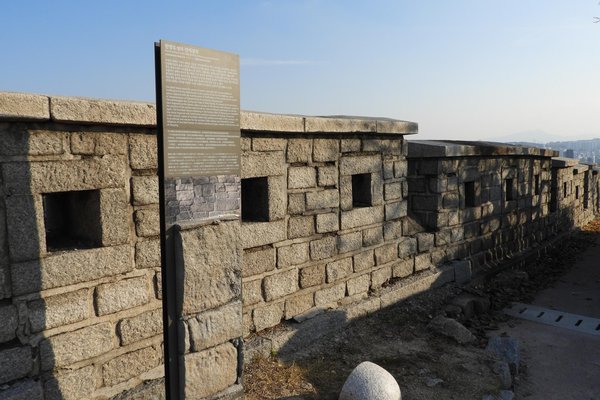Republic of Korea
Capital Fortifications of Hanyang
The Capital Fortifications of Hanyang comprise fortifications that were completed in the 18th century.
These fortifications were built to defend Hanyang, the capital of the Joseon Dynasty. In the 16th and 17th centuries, the dynasty faced invasions from Japan and China. As a result, a new defense system was determined to be needed to protect the dynasty by strengthening its central military command. The Joseon rebuilt Hanyangdoseong, a city wall surrounding its capital, and constructed two other fortifications called Bukhansanseong and Tangchundaeseong north of the capital city. It is the largest existing capital fortification in East Asia.
Site Info
Official Information
- Full Name
- Capital Fortifications of Hanyang : Hangyangdoseong Capital City Wall, Bukhansanseong Mountain Fortress and Tangchundaeseong Defense Wall (ID: 6652)
- Country
- Republic of Korea
- Status
-
Nominated 2027
Site history
History of Capital Fortifications of Hanyang
- 2023: Added to Tentative List
- Added to tentative list
- 2022: Preliminary Assessment
- .
- 2017: Requested by State Party to not be examined
- As Seoul City Wall TWHS
- Type
- Cultural
- Criteria
- iii
- iv
Links
- UNESCO
- whc.unesco.org
- Related
-
- seoulcitywall.seoul.go.kr — Official Website
- koreanheritage.kr — Korean heritage magazine
All Links
UNESCO.org
- whc.unesco.org — whc.unesco.org
Related Resources
- seoulcitywall.seoul.go.kr — Official Website
- koreanheritage.kr — Korean heritage magazine
Community Information
- Community Category
- Secular structure: Military and Fortifications
Travel Information
Recent Connections
News
No news.
Community Reviews
Show full reviews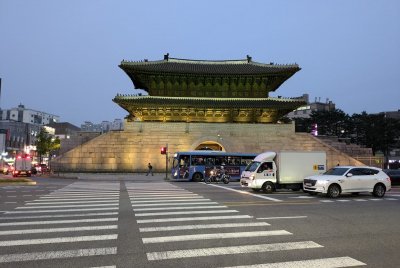
The first time I visited Korea in 2004, I recall that the beautiful Dongdaemun Gate stood at the centre of a large and unattractive roundabout with heavy traffic. Today, the Gate is no longer surrounded by cars and can be visited more easily. Although it still faces on 2 sides a busy junction, the gate has some space for visitors on the other 2 sides.
Seoul has been making efforts to beautify its urban fabric, including the restoration of the city wall. Another notable example is the opening up of the Seoul River, which has become a bit of an urban lung. However, the city has yet to fully address the main issue: heavy car traffic with aggressive drivers.
Present-day Seoul, known as Hanyang during the Joseon dynasty, was the capital of the dynasty. Korea, being a small country compared to its larger neighbours China and Japan, always required fortifications for defence. Many of these locations can still be visited around the city.
OUV
I find it difficult to see how this nomination creates a separate OUV:
- The wider Seoul metro area already has two fortifications on the list (Hwaseong, Namhansanseong).
- Seoul itself has three more World Heritage Sites (WHS) linked to the Joseon dynasty and its role as the capital.
Personally, I could only envision this as an extension to an existing WHS, not as a separate one. This would still not resolve the authenticity concerns, as large portions of …
Keep reading 0 comments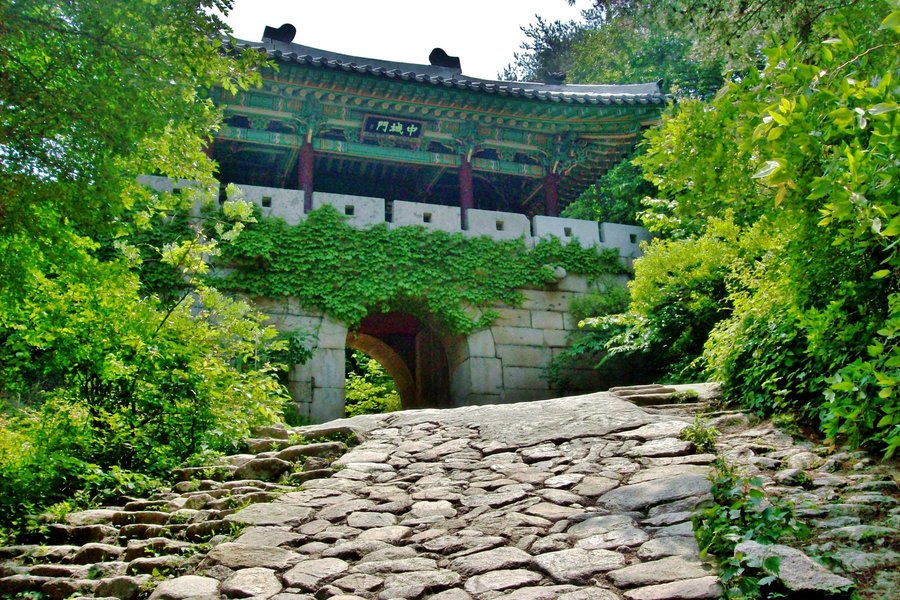
Since this nomination expanded, I thought I would write a review specifically for Bukhansanseong (about 12 km wall length). I visited Bukhansanseong (Mountain Fortress) in the Summer of 2008. I spent the whole day hiking in Bukhansan National Park and visited multiple gates (there are 13 gates total). I researched the route and I was keen to walk much of the fortress before making my way to the parks famous granite peaks. The terrain is more challenging than Namhansanseong Fortress (built earlier 1624-1626). Bukhansanseong was built rapidly (less than a year) and the design utilized the physical terrain.
Background History: During the reign of King Sukjong of Joseon (19th Ruler of the Dynasty) the Manchu conquest of China was ongoing, but nearing completion. Therefore, Korea was in a precarious position. Sukjong's father and grandfather witnessed the devastating effects of the slow collapse of the Ming Dynasty as Korea's closest ally. The Manchu invasion of Korea in 1627 and 1636 spurred Korea to improve their military and modernize the capitals primary defenses. The so-called 'Capital Fortifications of Hanyang' is more of a product of Sukjong's time than the first ruler(s) of Joseon. In fact, Bukhansanseong was completed in 1711 and linked to Hanyangdoseong via the Tangchundaeseong Defense Wall. Sukjong navigated political factions at the time, one which advocated war against the Qing (indeed the Ming came to the defense of Korea during the Imjin War). In the end, Sukjong avoided war and sought a policy of strength through defense and diplomacy. …
Keep reading 0 comments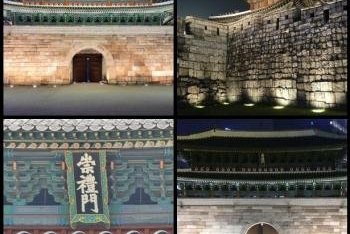
I visited this tentative WHS in April/May 2017. On different days, I walked different stretches of the Seoul City Wall.
Most of the city wall is reconstructed and in a way certain parts reminded me of the Xian City Wall. However, it is worth walking/hiking different parts for panoramic views of Seoul from different angles. The Seoul City Wall museum is a great place to appreciate the wall's importance.
My personal highlights were visiting the 3 remaining main gates and 4 of the minor gates (photo).
Keep reading 0 comments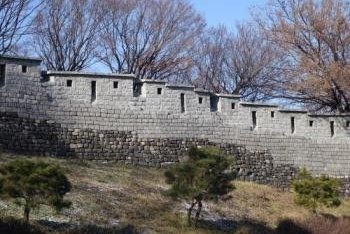
Seoul is preparing for inclusion of its 4th WHS in the city proper in 2017. ‘Hanyangdoseong’ covers its City Wall, originally constructed in the late 14th century. ‘Hanyang’ is a reference to the old name for Seoul, while ‘Doseong’ is a “walled city where a ruler lives”. The over 18 km-long wall was built along the ridge of Seoul’s four inner mountains. The site seems well on track for receiving foreign visitors, it already has an elaborate website in English and its own Seoul City Wall Museum.
12 km of the wall has been preserved, as well have the South Gate and the East Gate. The official website has extensive information about hiking trails on and alongside stretches of the wall. I choose the shortest and most accessible route, the Naksan Mountain Trail. I started from the southern end at Dongdaemun (East Gate) – the site of one of the best remaining gates, plus the location of the City Wall Museum. Dongdaemun has its own subway stop, and from there I took exit number 1. The way to the museum and the start of the hike is signposted by arrows on the street tarmac.
The museum is located in what looks like an enormous office building. It is solely used however for exhibitions on the City Wall. Entrance to its 3 floors is free. Lots of money has gone into restoring the wall over the past years, and the museum seems costly too. All has been done with future WH …
Keep reading 0 comments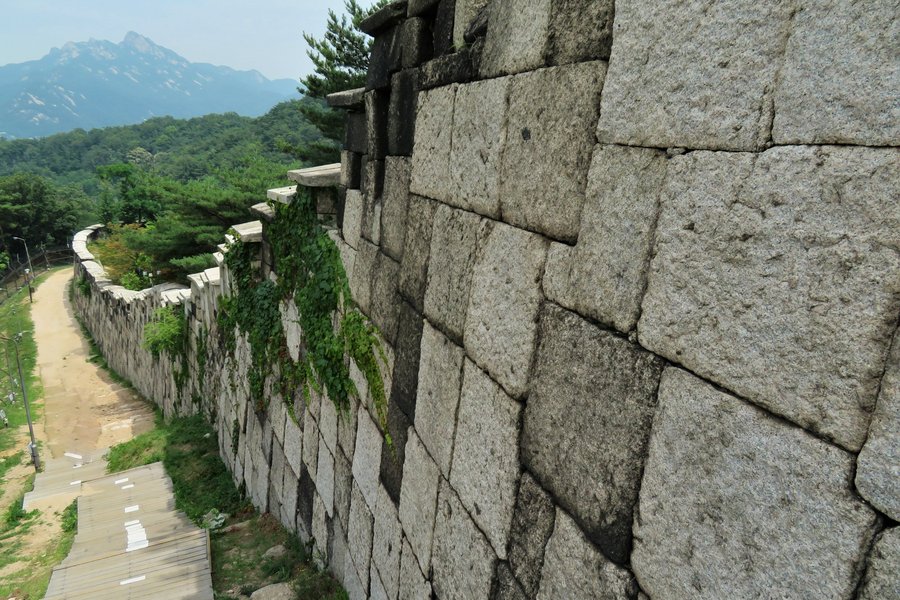
I had visited Seoul City Wall previously, but two gates and two small hikes I feel was not sufficient to fully understand this nomination. Therefore, I planned 3 separate hikes along Hanyangdoseong. There are 4 courses total. One suggestion: make sure to not only hike on the wall, but alongside it.
Hanyangdoseong Routes
Baegak Route is perhaps the most interesting course, in part because its only been opened since 2007. This site is inexorably linked to an assassination attempt in 1968 by 31 North Korean agents who infiltrated South Korea at the DMZ. In an attempt to reach the Blue House and assassinate the President several combatants were killed in the forested area nearby. This event caused this area to be closed to the public for around 40 years. Because this portion of Seoul City Wall lies directly behind the Presidential complex, extra security is very present and you will need to present a passport before starting your 3 hour, 4.7 km hike. Also be aware there are some photo restrictions inward toward Seoul. One unfortunate reality on this route is the security checkpoints, barbwire, and even an old land to air missile defense system which makes photographing extended portions of the wall difficult.
The unique elements of this hike will not be lost for most visitors, it is one more of those tragic areas that make the Korean peninsula what it is today. In closing, 26 South Koreans, 29 North Koreans, and 4 Americans were killed before the Blue …
Keep reading 0 comments
